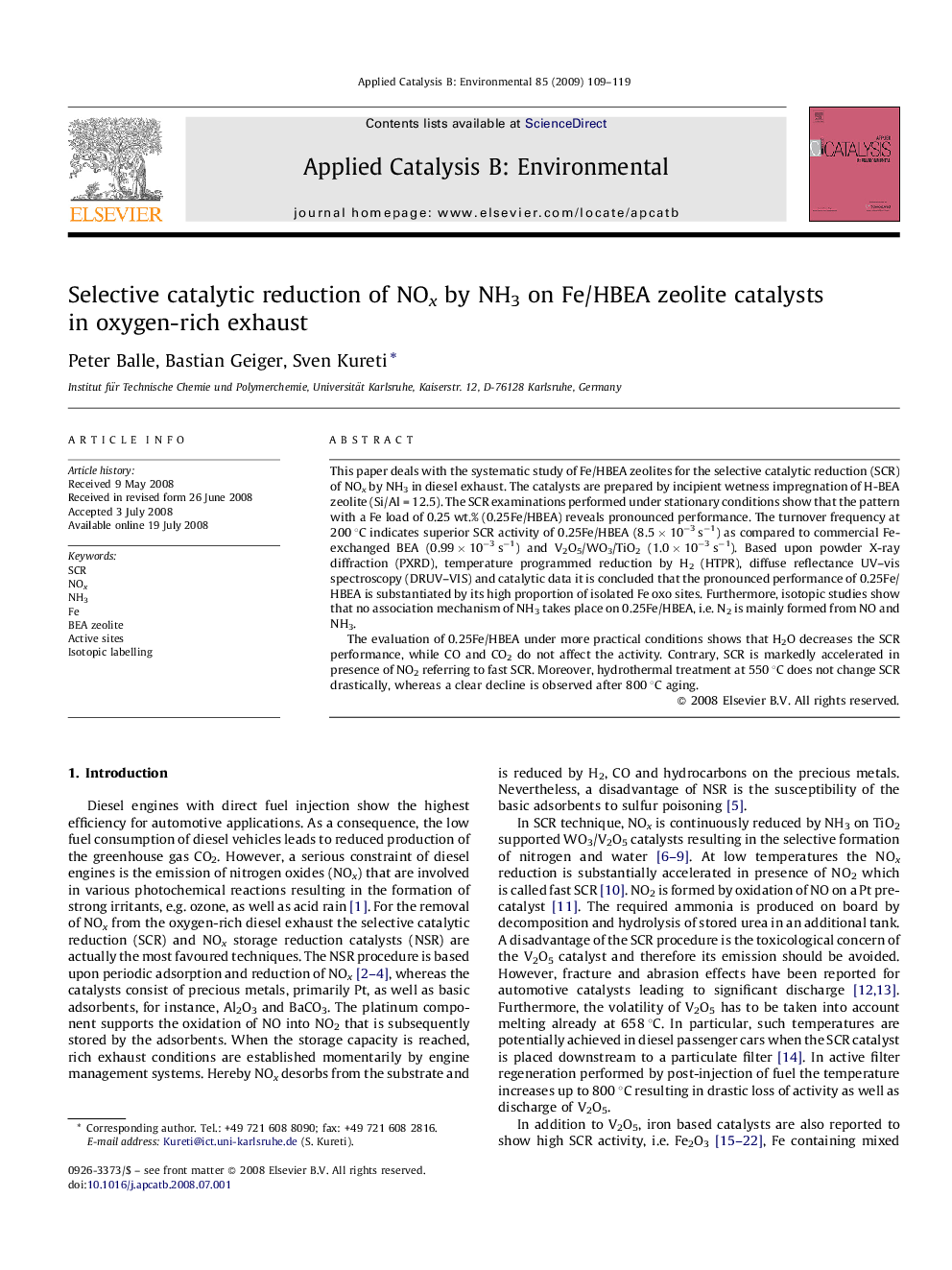| Article ID | Journal | Published Year | Pages | File Type |
|---|---|---|---|---|
| 48088 | Applied Catalysis B: Environmental | 2009 | 11 Pages |
This paper deals with the systematic study of Fe/HBEA zeolites for the selective catalytic reduction (SCR) of NOx by NH3 in diesel exhaust. The catalysts are prepared by incipient wetness impregnation of H-BEA zeolite (Si/Al = 12.5). The SCR examinations performed under stationary conditions show that the pattern with a Fe load of 0.25 wt.% (0.25Fe/HBEA) reveals pronounced performance. The turnover frequency at 200 °C indicates superior SCR activity of 0.25Fe/HBEA (8.5 × 10−3 s−1) as compared to commercial Fe-exchanged BEA (0.99 × 10−3 s−1) and V2O5/WO3/TiO2 (1.0 × 10−3 s−1). Based upon powder X-ray diffraction (PXRD), temperature programmed reduction by H2 (HTPR), diffuse reflectance UV–vis spectroscopy (DRUV–VIS) and catalytic data it is concluded that the pronounced performance of 0.25Fe/HBEA is substantiated by its high proportion of isolated Fe oxo sites. Furthermore, isotopic studies show that no association mechanism of NH3 takes place on 0.25Fe/HBEA, i.e. N2 is mainly formed from NO and NH3.The evaluation of 0.25Fe/HBEA under more practical conditions shows that H2O decreases the SCR performance, while CO and CO2 do not affect the activity. Contrary, SCR is markedly accelerated in presence of NO2 referring to fast SCR. Moreover, hydrothermal treatment at 550 °C does not change SCR drastically, whereas a clear decline is observed after 800 °C aging.
